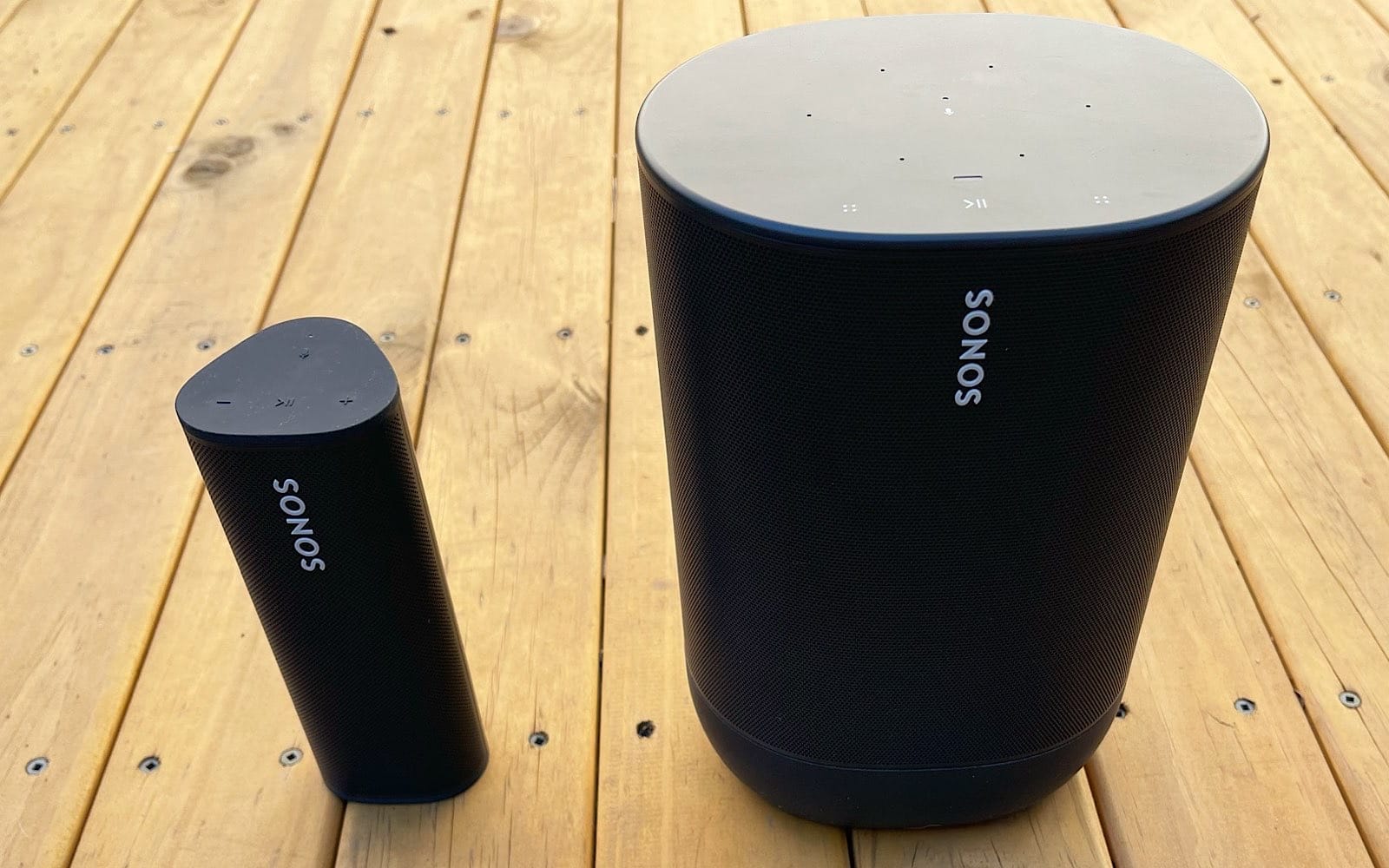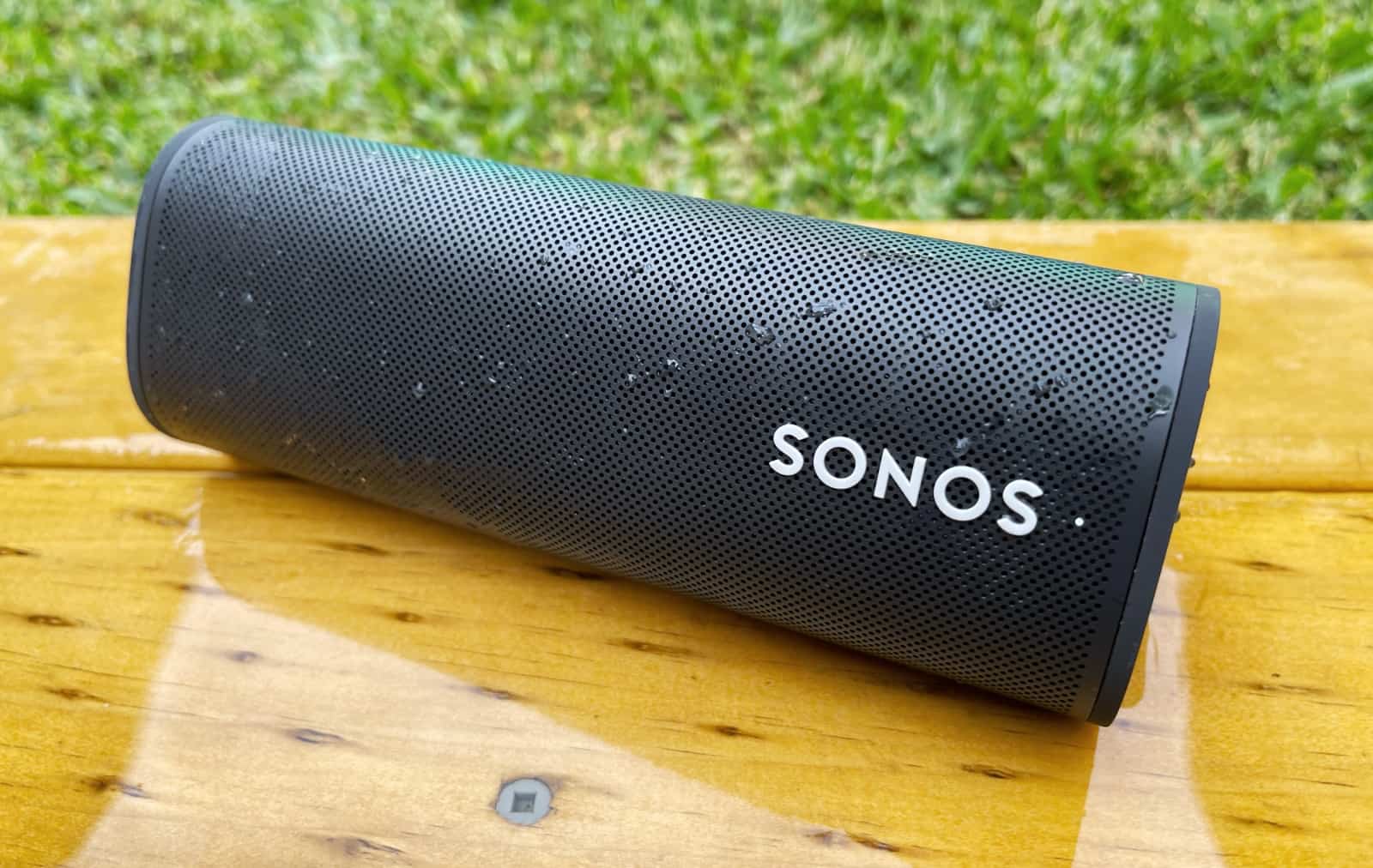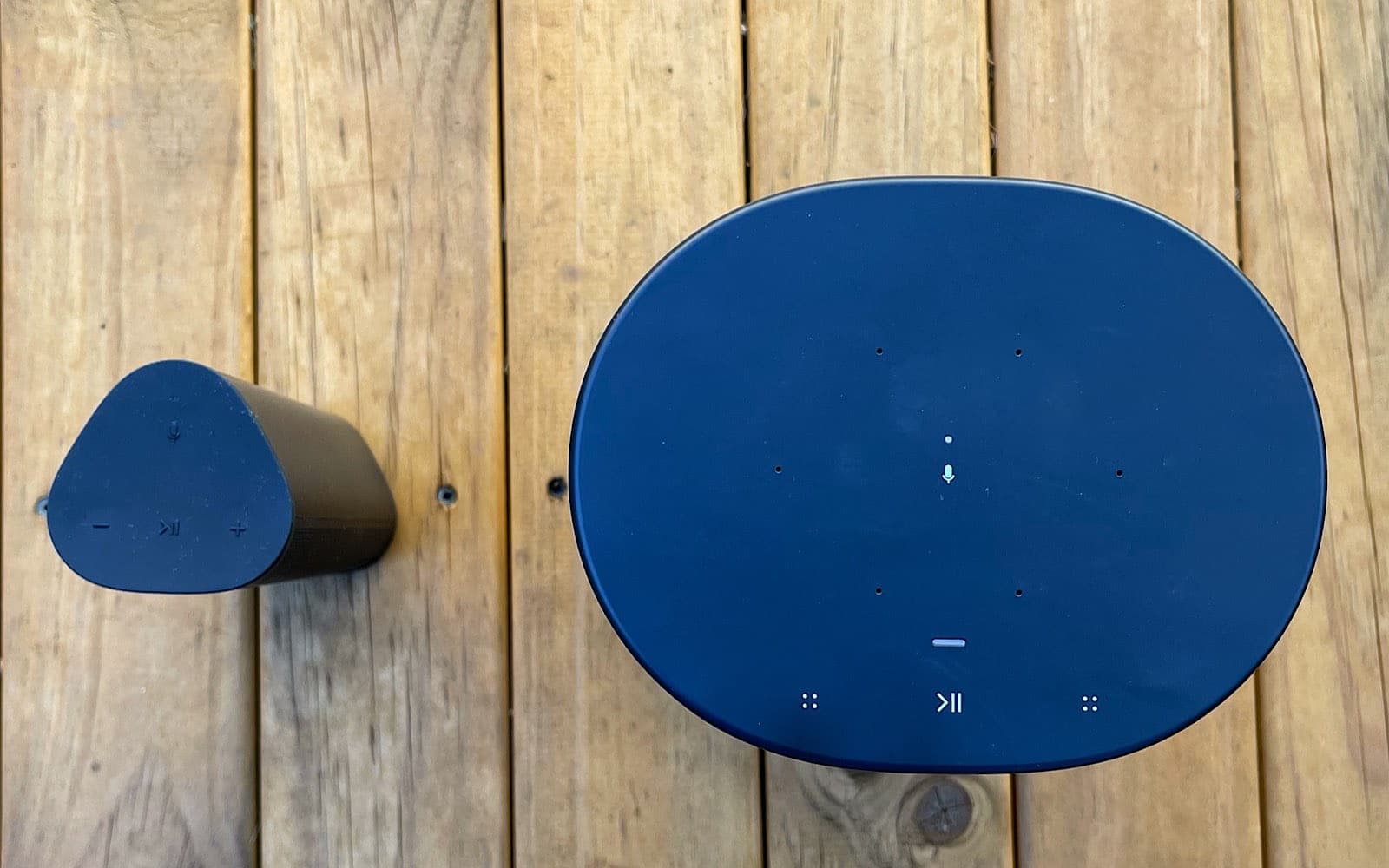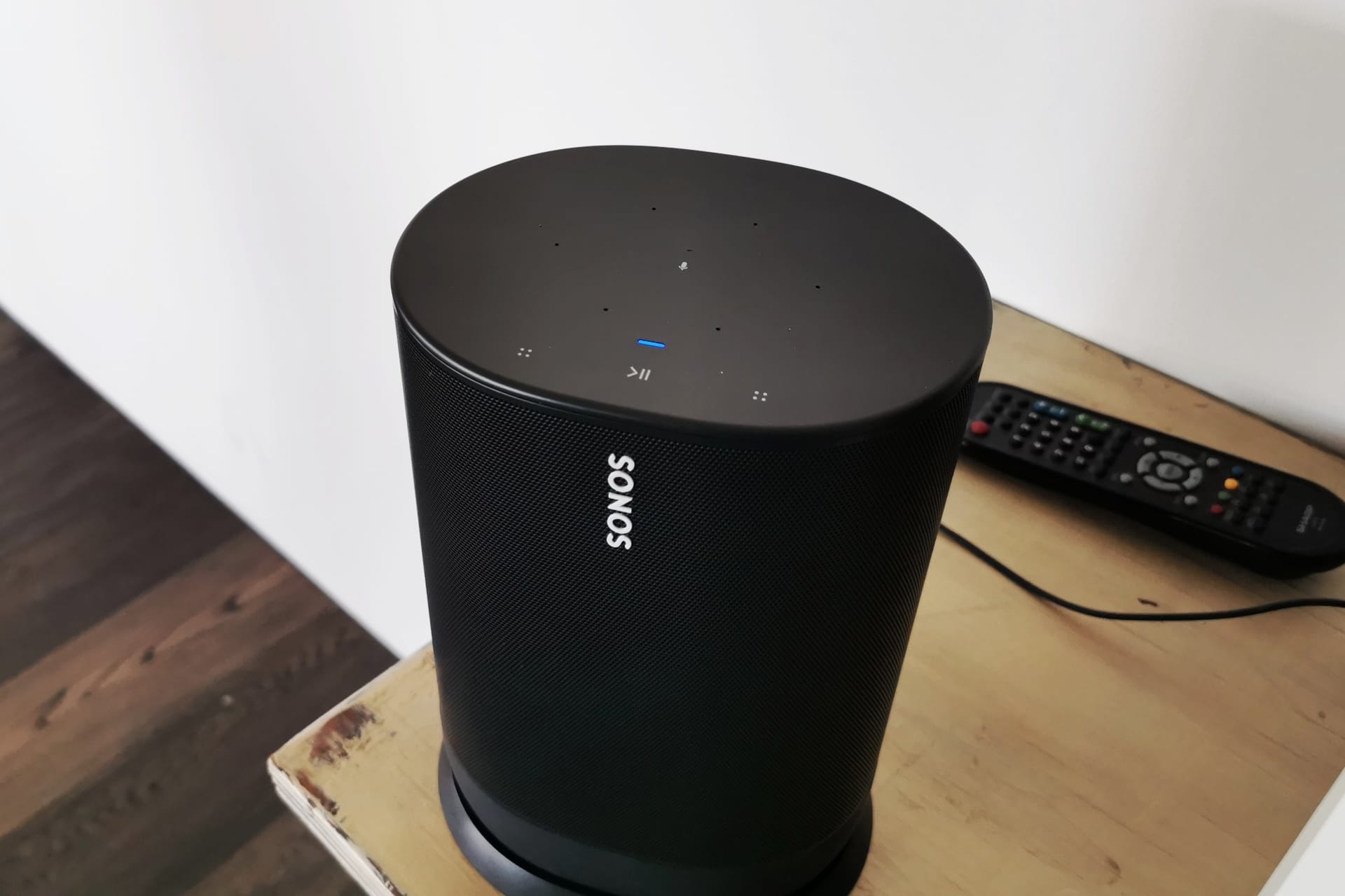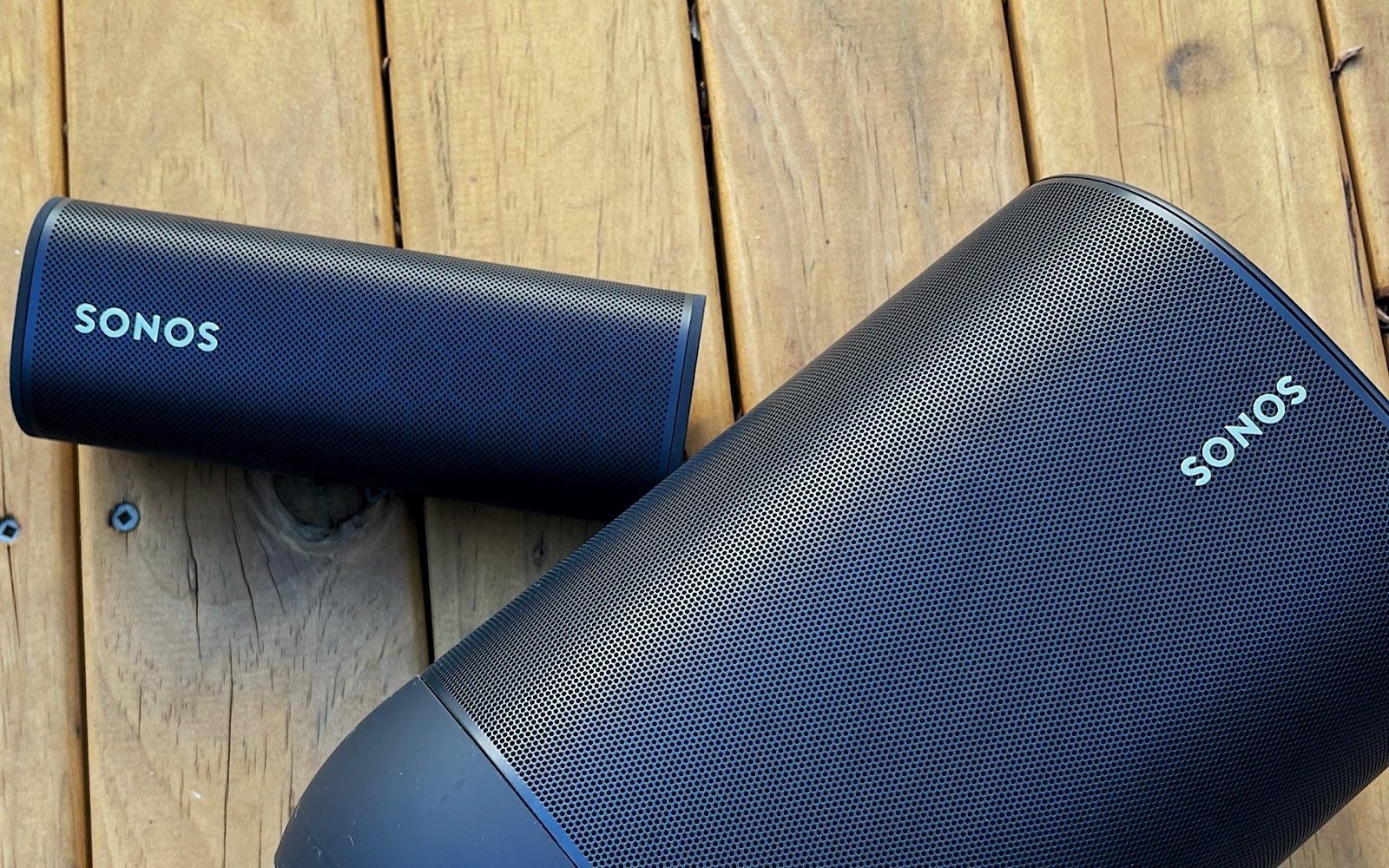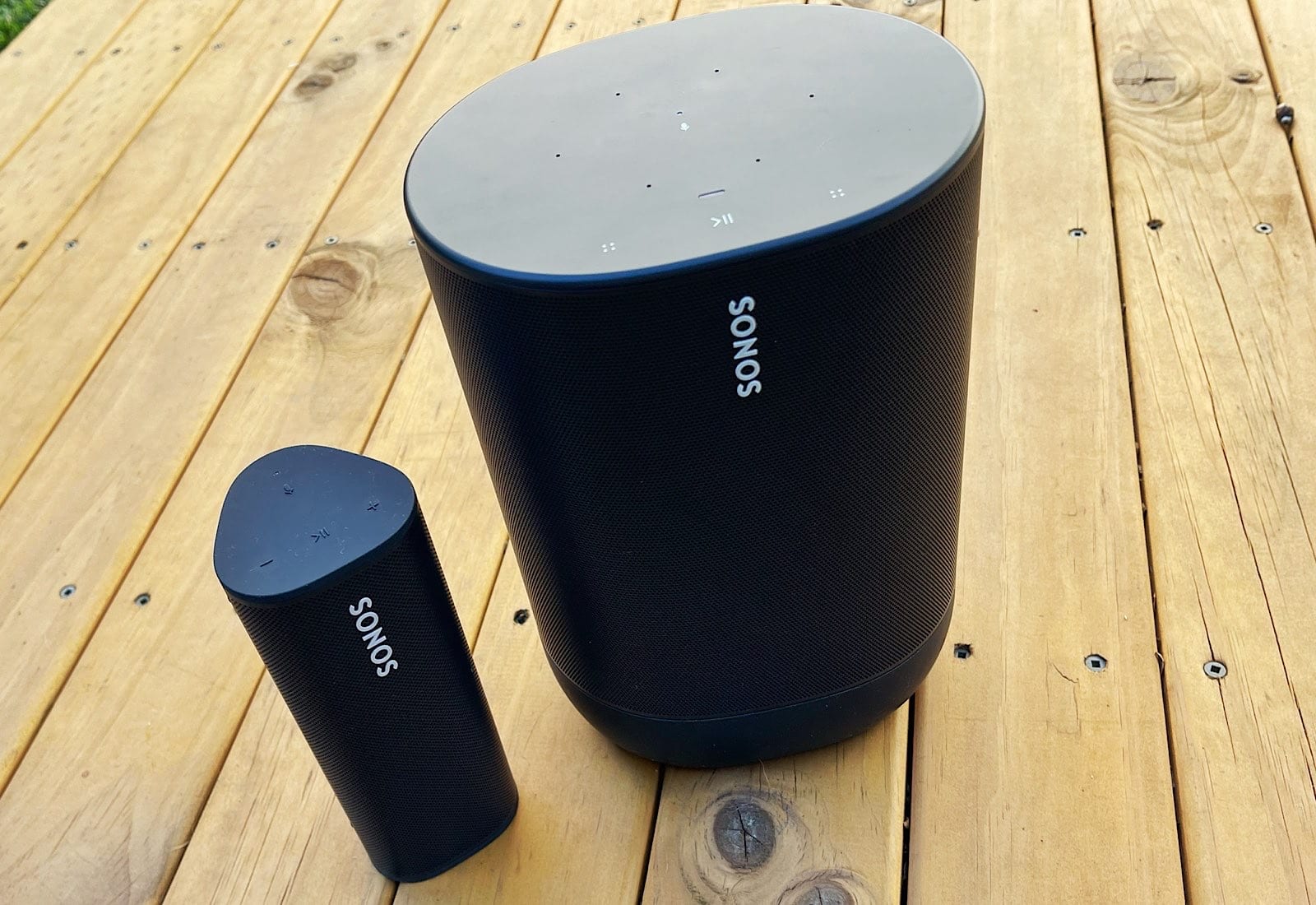They’re not remotely the same speaker, but they’ll inevitably be compared because of what they do: what’s the difference between the Sonos Move and the Sonos Roam?
Sonos now has two wireless and cordless speakers, as it delivers more choice not just in its multiroom speaker range, but more ability to take the speakers outside the home.
With 2019’s Sonos Move and 2021’s Sonos Roam, there are now two ways to take a Sonos speaker to go, allowing you to leave a speaker at home and take it with you easily.
But the two speakers are also entirely different, and built differently. It’s a question of big versus small when you compare the Sonos Move to the Sonos Roam, so which is better?
Design
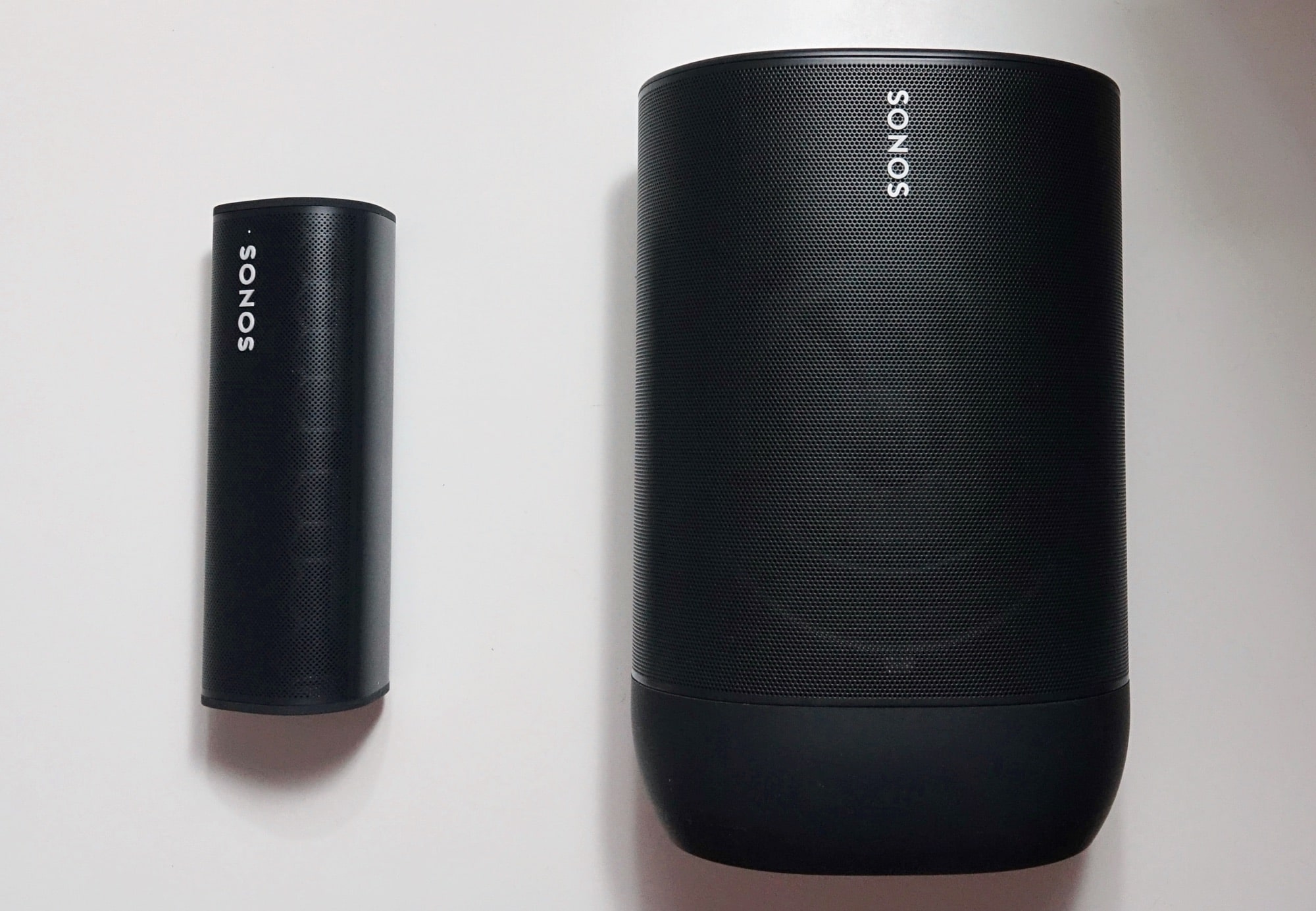
The Roam is super new and the Move has been out for a bit, and that may mean the Roam has new design skills over its two year old sibling. But hold up, let’s look at them first.
Design-wise, one is small and easy to carry, while the other is large and, well, not.
Both are well designed, but the Sonos Roam is much more portable, with a weight of 430 grams for the Roam, and a little over six times that for the Sonos Move, which is a 3 kilogram speaker.
We like the design of both, but we’ll give the design win to the Roam for this round.
Winner: Sonos Roam
Durability
However both offer durability without thinking, and Sonos have kept that across both models. You’ll find the Roam and Move are both made from plastic and water resistant, though to varying degrees.
IP ratings known as “Ingress Protection” aren’t always easy to understand at the best of times, but both the Move and Roam can deflect water, albeit differently.
In the bigger Sonos Move, there’s a rating of IP56, explained with the “5” detailing dust protection as opposed to dust-tight, while the water resistance can survive splashes and powerful water jets. Basically, the Sonos Move is a splash-proof speaker.
The smaller Sonos Roam actually offers higher weather resistance, with a rating of IP67, with that “6” basically saying the Roam is dust-tight, and the “7” advising the Roam can survive up to one metre of water immersion for up to 30 minutes. Simply put, you can submerge the Sonos Roam, but you can’t submerge the Move.
Winner: Sonos Roam
Controls
One thing they both have that’s identical is top-mounted controls, with a touch and tap panel for the Move, and physical buttons encased in rubber for the Roam. That means you can control both easily and physically, and of course, there’s always an app for that.
Frankly, we’ll call this one a tie.
Winner: Tie
Connection & relability
And both the Roam and Move also talk to phones and networks in much the same way.
While at home, both Sonos portable speakers talk to other Sonos speakers over WiFi, meaning they can talk to the Sonos multiroom speakers with ease, synchronising sound and playing nicely. And you can also take both out and connect them to a phone, tablet, or computer using Bluetooth. They both also support AirPlay 2, as well.
They even have the same USB Type C charge port, and both support wireless charging.
Yep, that’s a tie.
Winner: Tie
Sound quality
Both also deliver solid sound, with the Sonos Move delivering a big sound both inside and outside that’s fairly balanced, while the Sonos Roam offers much the same, albeit in a smaller package.
To date, every Sonos speaker that we’ve tested has delivered excellent sound, and that seems to be the company’s main effort in producing a speaker: deliver something that really delivers.
While the sizes and speaker designs are different, both the Sonos Move and Sonos Roam nails sound beautifully.
Winner: Tie
Compatibility
While the Sonos Move and Sonos Roam are close to being identical on the sound and connection front, there’s marginally more compatibility for the entire Sonos system from the older Sonos Move, and that’s because of one small feature: S1.
Depending on how old your Sonos system is, you may have devices you never could to the new Sonos S2 system, devices including the original Play:5. If that’s your life, the Sonos Move is technically compatible, though it’s also possible new models may not work simply because the new firmware only works with new models going forward.
That places the Sonos Move in an interesting position, making it technically compatible with the old speakers, but also probably not depending on if the software had been updated before purchase.
Outside of this, the Sonos Move and Sonos Roam are identical in how they connect to a network, and offer compatibility for WiFi, Bluetooth, iOS, Android, macOS, and Windows, because they’re both Sonos speakers that operate over WiFi, and both Sonos speakers that can work over Bluetooth, too.
Winner: Tie
Battery
But they’re not the same as to how much battery life they come with, or even how they charge.
On the latter, they both support charge over Type C USB and they both support wireless charging, but only the Sonos Move comes with a wireless charging cradle, while the Sonos Roam supports the Qi standard for wireless charging, yet doesn’t come with one. Granted, the Roam’s wireless charging works with any wireless charger out there, and even Apple’s MagSafe charger, but it doesn’t come with one at all.
The battery is the other question mark, and perhaps rather unsurpsingly, the bigger Sonos Move wins this category but only barely. You’ll find up to 11 hours per charge on the Move, but up to 10 on the Sonos Roam.
Helping the Move to win in battery is that included wireless charger, which keeps the speaker charged and working inside of a home. Meanwhile, for the Roam to gets its entire 10 hour battery, you kind of have to turn it off in between use, otherwise it drains life when on idle time.
So we’ll give battery performance and charging to the Sonos Move.
Winner: Sonos Move
Value
In the category of value, it’s a different story altogether.
At $279, the Sonos Roam is one of the least expensive Sonos models out there, beaten only by a model of the Sonos One without assistant support — the Sonos One SL — and the IKEA Symfonisk Sonos speakers, which are very much entry-level Sonos speakers that perform more furniture-like functions, such as also being a shelf or lamp.
With a solid output of sound in a super small size, the Sonos Roam nails its $279 price tag without question, while Sonos Move’s $649 price is a little harder to justify. Over twice the cost of the Roam, you could actually buy two Sonos Roam speakers ($249 each) and two Sonos wireless chargers ($79 each) to get close to the price of the $649 Move (for $7 more at $656). And if you skipped the optional Sonos magnetic wireless charger and went with a cheaper standard Qi charger, you’d actually save money.
Winner: Sonos Roam
What should I choose: Sonos Move or Sonos Roam?
While they’re very similar, the differences might just help you decide on which portable Sonos makes sense for you.
Both are very good, but if you’re after something to carry in your bag for a trip, the Roam is the one to look at, because at under 500 grams, it’s a properly portable speaker that can work at home and out and about. And if you prefer a meatier sound but you don’t need it in your backpack, the Sonos Move might be the one look at. While it’s a 3kg speaker, you get a bigger burst of sound in a speaker that really delivers.
It’s hard to go wrong between either, as the Sonos Move and Sonos Roam are solid speakers either way. One is bigger and louder, and the other is small but almost entirely as capable.
If you’re after something more portable, consider the Roam: it’s the very definition of a portable Sonos, meant to take with you or left at home. We’d recommend grabbing a wireless charger, too, as that will help it stay useful at home.
Meanwhile, if you need a bigger sound, be it outside on the deck, near the pool, or even in your home, you might want to look at the Sonos Move. Arriving with a wireless charger, the Move typically stays on its perch and acts as another Sonos speaker most of the time, and is ready for action when you want to take it out.
We’d say for most people, the Sonos Roam will likely be the one they settle on, thanks in part to just how small and relatively inexpensive it is. However, both the Move and Roam are great speakers, so whatever you choose, you’ll likely be happy all the same.


